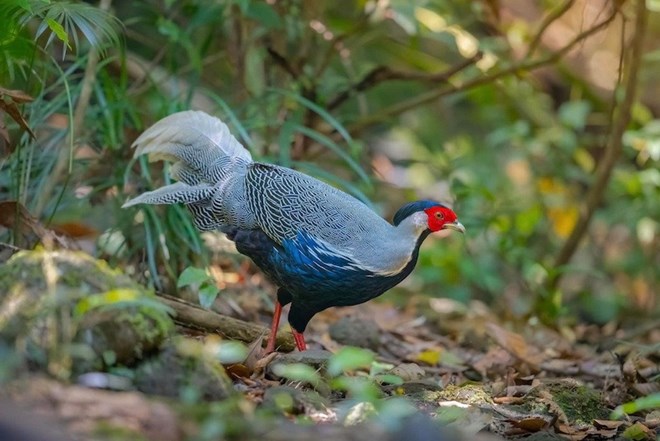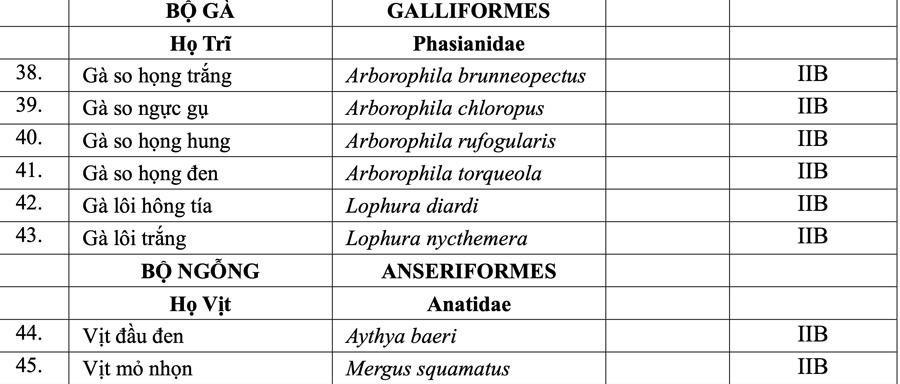The Ministry of Agriculture and Environment issued Circular 27/2025/TT-BNN on June 24, 2025, effective from July 1, 2025. The circular stipulates the list of endangered, precious and rare species including Group I and Group II.
In which, group I is a species that is strictly prohibited from exploiting and using specimens exploited from nature for commercial purposes, including: endangered, precious, and rare species given priority for protection; endangered, precious, and rare forest plants and animals (Group IA is forest plants, Group IB is forest animals). Group II is a species restricted for exploitation and use for commercial purposes, including: Endangered, precious, and rare forest plants and animals (Group IIA is forest plants, Group IIB is forest animals).
Also according to the appendix of Circular 27, white-cheeked chickens belonging to group IIB - a species restricted to exploitation and use for commercial purposes. Previously, Decree 84/2021/ND-CP stipulated a list of endangered, precious and rare wildlife species, including white-legged chickens listed in the red book, belonging to group of wildlife species in group IB.

In addition to white-throated chickens, there are 5 other chickens also in the group of rare and precious animals IIB: white-throated chickens, breast-throated chickens, fighting-throated chickens, black-throated chickens, white-throated chickens, and white-throated chickens.

In addition, there are 2 types of ducks that are also rare animals: black-headed ducks and spicy-edged ducks.
Article 16 of Circular 27 also clearly states the regulation on raising endangered, precious and rare species that are given priority for protection. Accordingly, raising endangered, precious and rare animals with priority for protection for biodiversity conservation purposes, scientific research, and eco-tourism are carried out at a certified biodiversity conservation facility, meeting the prescribed conditions such as ensuring the legal origin of the species according to the provisions of relevant laws. At the same time, ensure that the breeding species and the number of individuals are in accordance with the licensed species list with the Certificate of Biodiversity Conservation Facility, and have a Breeding Plan according to the prescribed form.
For the case of ecotourism farming, species are displayed according to the correct list of licensed species with the Certificate of Biodiversity Conservation Facility; no individuals are displayed with diseases or injuries, pregnant, or raising children.
In addition, there are regulations on requirements for land area, barns and facilities as well as human resources when raising endangered, precious and rare animals that are prioritized for protection at biodiversity conservation facilities.







